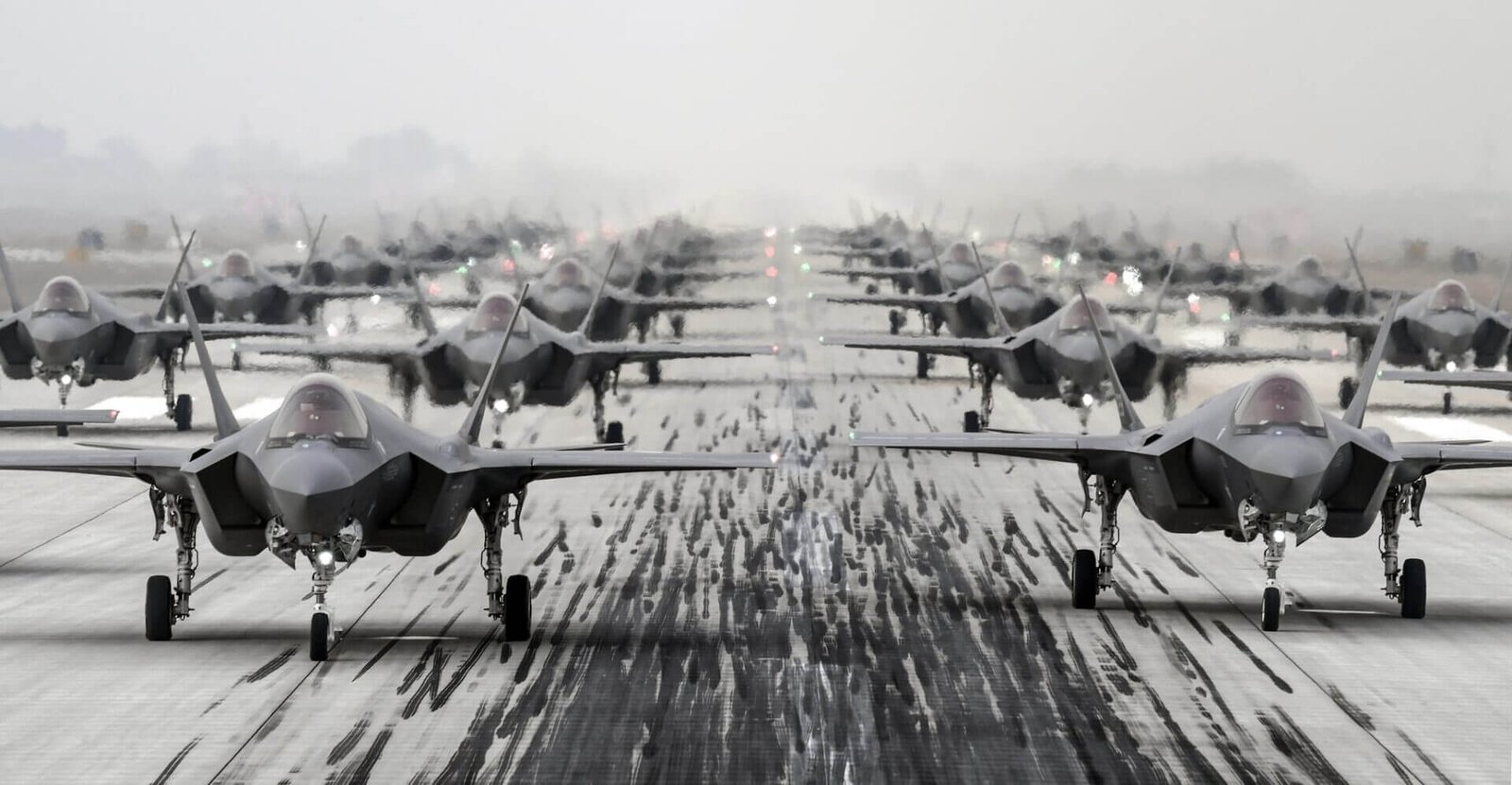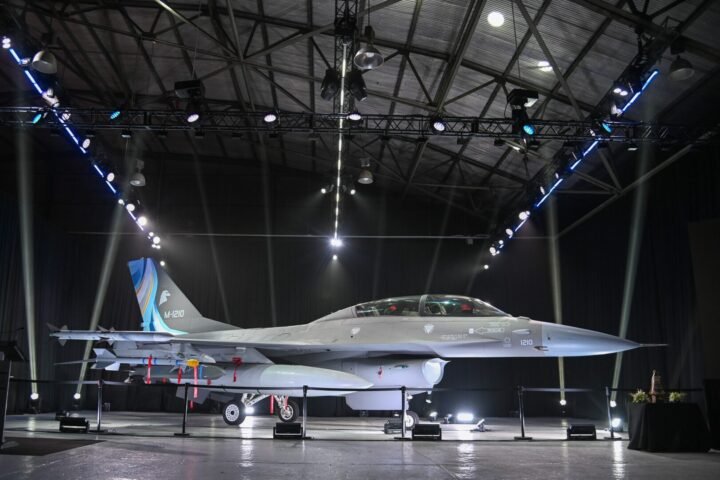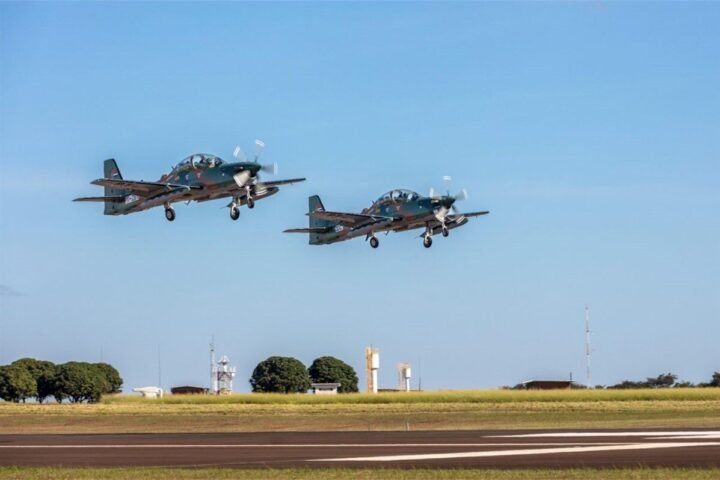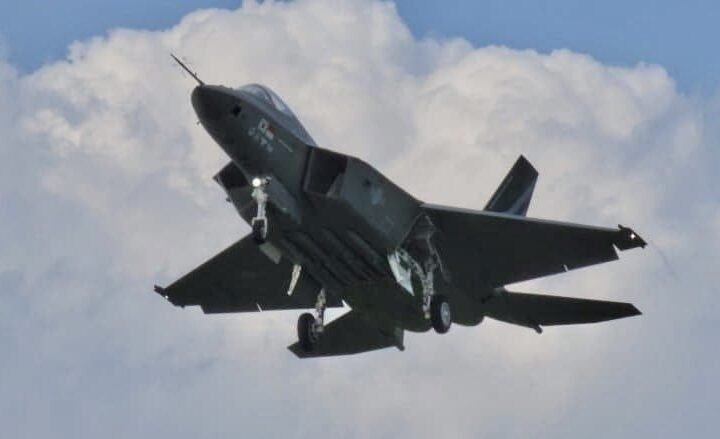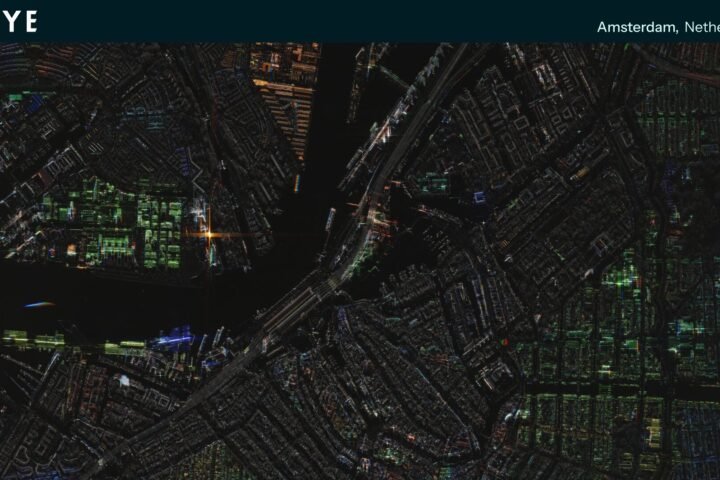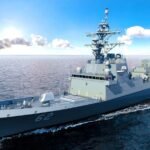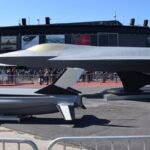The Air Force’s FY2026 budget request for the Joint Strike Fighter (JSF) F-35 Lightning II program decreases the quantity of aircraft but allocates funds for new capabilities.
With 24 new F-35A aircraft anticipated for the fiscal year, the priority is to consolidate operational capabilities, update infrastructure, and introduce new technologies. This is a significant drop from the 44 from the previous year. The goal is to consolidate capabilities rather than numerically increase the fleet.
An overall investment of approximately 4 billion dollars will be made by the Air Force, with over 3.5 billion devoted to production. Moreover, more than 530 million will be allocated to Advance Procurement, or the early purchase of critical, long-production-cycle components. The new radar AN/APG‑85, intended to replace the APG‑81 in new-production fighters destined for the United States, is a significant technical novelty in this forward strategy.
The A variant of the Joint Strike Fighter, designed for conventional takeoff and landing, is headed towards substantial evolution. The FY2026 budget provides funding for all those non-recurring activities – from design to construction of industrial equipment – required to integrate the new capabilities planned for Block 4. This update is crucial for ensuring air superiority in future scenarios.
These changes range from avionics to countermeasure systems, new weapons, and improved integration capabilities with the information infrastructure. This is coupled with an upgrade of logistical capabilities. Indeed, the replacement of the old ALIS system with ODIN, a cloud-native platform designed to ensure more efficient maintenance and a much more modern data management, continues.
One of the most significant points of the FY2026 request concerns the radar. The Air Force has initiated a two-year advanced procurement program for the AN/APG-85 developed by Northrop Grumman. This new AESA radar will replace the proven APG‑81 in versions destined for the United States.
The APG‑81, in use since the inception of the F-35 program, has been one of the distinctive elements of the American stealth fighter for years. It has offered advanced radar capabilities thanks to AESA technology (Active Electronically Scanned Array), directly derived from the F-22 radar, allowing simultaneous tracking of multiple targets, high-precision air-to-surface operations and good resilience to electronic countermeasures.
But today, in the face of the growing sophistication of aerial and terrestrial threats, reliability alone is no longer enough. The APG‑85 was born to respond to this technological leap. While maintaining an AESA architecture, the new radar will integrate more efficient modules. They will likely be based on gallium nitride (GaN), capable of generating more power, improving resolution, and reducing thermal footprint.
Training and maintenance are also central. The FY2026 provides for the purchase of peculiar support equipment (PGSE) for the cellular, engine, and avionics systems. There will also be the purchase of mission simulators, planning kits, technical manuals, and pilot training devices.
At the same time, the strengthening of the maintenance centers (depot) scattered throughout the United States continues. The goal is to create an autonomous and sustainable repair network in the long term. The aim is clear: to reduce dependence on external suppliers, ensure readiness, and lower operational costs over the life cycle of the aircraft.
Even if the number of aircraft planned for FY2026 is the lowest since 2018, this does not necessarily indicate a slowdown in the program, instead, it is part of a goal to pay greater attention to technical sustainability, technological upgrade, and the maturation of support infrastructure. This is more important than mass production. The average cost of an F-35A in the configuration planned for FY2026 is indeed about 165 million dollars per system. This is a growing value compared to previous years; it was 109 million in FY2025. Such an increase is justified by the greater complexity of the new systems, inflation costs, and production on a smaller scale.

